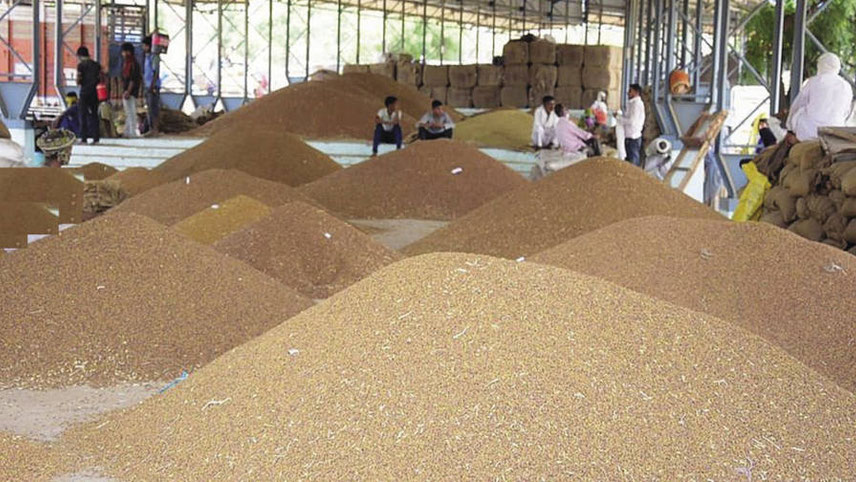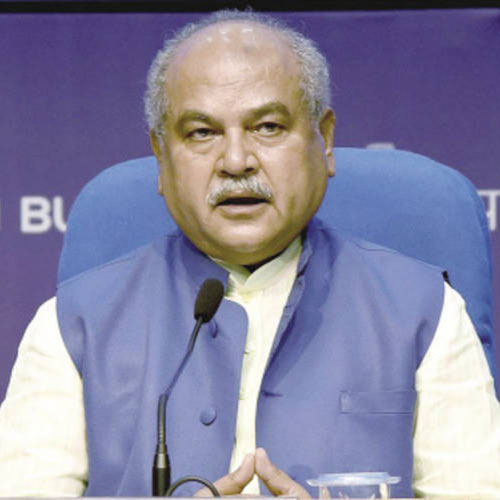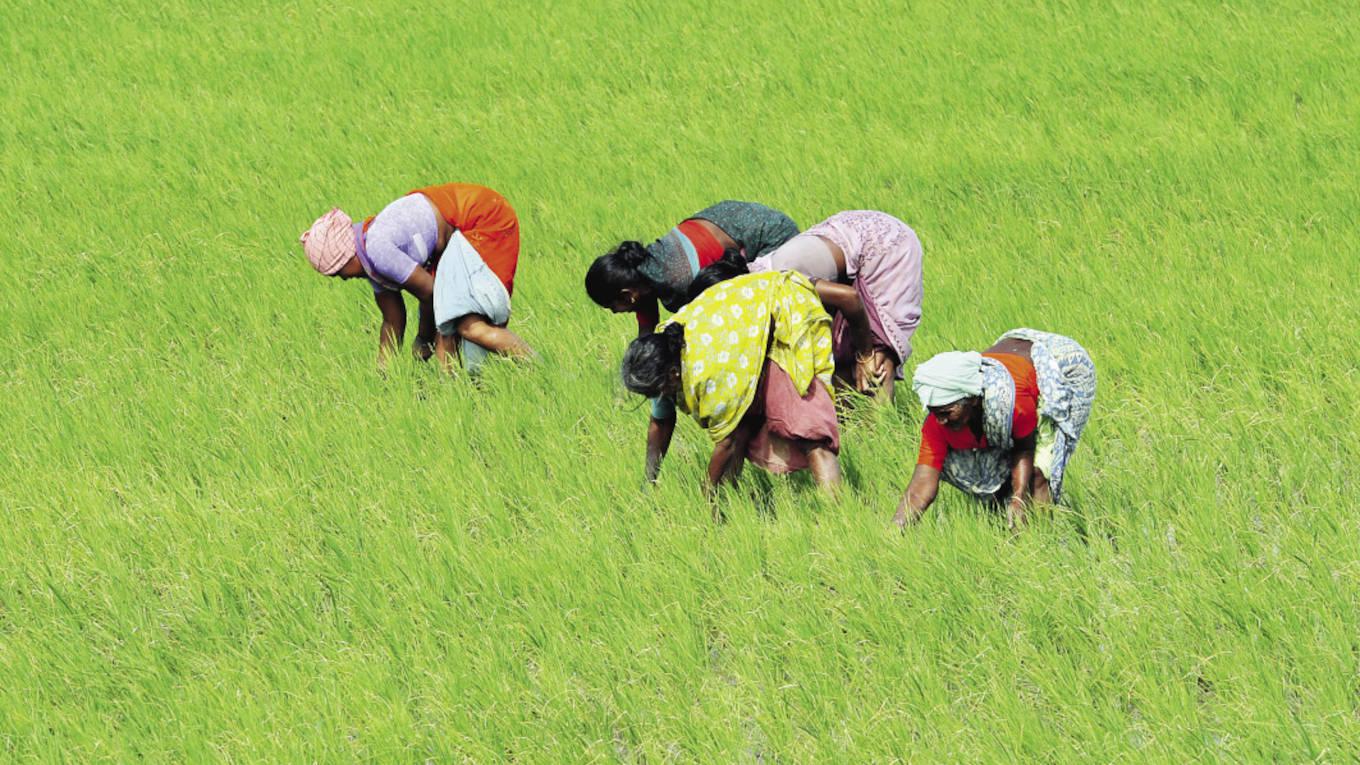-

The average price hike would be about 5.8 per cent for these commodities
Madan Sabnavis, Chief Economist, Bank of Baroda
“The hike in MSP of oilseeds is a step in the right direction,” says Suresh Nagpal, chairman, Central Organisation for Oil Industry & Trade – an apex association of edible oils. “As farmers get a secured price for their produce, it will encourage more and more farmers to grow oilseeds, as well as prompt them to shift from grain. The area under oilseed cultivation has been on a steady rise over the past few years. With the latest rise, we expect it to increase further”. But, if India is to become a major exporter of its farm surplus, then an MSP-plus strategy will have to be implemented.
Cotton boost this year
This is imperative for more than one reason. This year, cotton spinning mills and other textile businesses were hit by a 53 per cent rise in cotton prices and a 21 per cent rise in yarn prices from January-May. Many of them were forced to shut down their units, as cotton prices shot up from Rs75,000 per candy (356 kg) in January 2022 to Rs1,15,000 in May. During the same time, yarn prices have gone up from Rs328/kg to Rs399/kg.
The main reasons behind this rise were: lower domestic cotton production, higher demand and increasing international prices. According to second advance estimates of cotton production by the ministry of agriculture, the country’s cotton output is estimated to decline by more than 3 per cent to 34 million bales in the 2021-22 crop year from 35 mn bales in the previous year.
About 5 mn bales are expected to be shipped out. Large cotton traders and multinational companies (MNCs) purchased and stockpiled huge quantities of cotton. Some quantity was also exported. As prices skyrocketed, the smaller mills were unable to purchase cotton due to working capital shortages.
However, the government is targeting an enhanced output this year. Among other important crops, the MSP of cotton (medium staple variety), which is another major crop grown during the kharif season, has been raised by 6.18 per cent in 2022-23 over 2021-22 (from Rs5,726 per quintal to R6,080 per quintal). That of the long staple variety has been raised by 5.89 per cent – from Rs6,025 per quintal to Rs6,380 per quintal.
According to industry sources, cotton planting in India, the world’s biggest producer of the fibre, could jump as much as 15 per cent in 2022 to an all-time high, as strong prices are prompting farmers to switch away from other crops. “Area planted to cotton in India could rise as much as 15 per cent from last year, because the crop is providing far better returns than alternatives,” says Atul Ganatra, president, Cotton Association of India. The Cotton Association expects the largest expansions in cotton area to be in the western states of Gujarat and Maharashtra, which together account for nearly half of the country’s production.
Paddy outlook
In the case of paddy, whose MSP for the first time crossed Rs2,000 per quintal, analysts believe it could spur sowing in Punjab, Haryana, and Uttar Pradesh. Last year, farmers got good prices for paddy. In Punjab, Haryana and UP, paddy acreage might rise due to this. This time’s MSP raise has less to do with politics. The Commission for Agricultural Costs & Prices (CACP) has estimated the average production cost of paddy (all paid-up expenses plus an imputed value of unpaid family labour) for 2022-23 at Rs1,360 per quintal.
The MSP of Rs2,040 per quintal for common paddy, then, translates into a 50 per cent return over cost. Last year’s MSP of Rs1,940 also delivered the same return over a projected cost of Rs1,293 per quintal. Farmers, thus, are only being compensated for higher cultivation costs.
-

The hike in MSP of oilseeds is a step in the right direction
Suresh Nagpal, Chairman, Central Organisation for Oil Industry & Trade
It is not just the cost of production going up that is the sole reason for the Modi government granting an above-trend MSP hike in paddy. A more pertinent factor has to do with public food grain stocks, which, at 31.14 million tonnes (mt) for wheat, as on 1 June, are the lowest in 14 years for this date. Although rice stocks, at 49.68 mt, are above last year’s corresponding level of 49.15 mt, the government clearly isn’t taking any chances.
Barely three months ago, the country had enough grain for free distribution through ration shops and also for exports. The post-March heat wave that took a toll on wheat crop yields and more than halved government procurement has made things a tad precarious.
With the next wheat crop arriving only in April 2023, there will be that much added dependence on rice now to meet the requirements of the public distribution system -- hence, the need to ensure adequate stocks and procurement of paddy. The planting of paddy has already begun in parts of the country.
As for edible oils, prices have been on the boil since the past few months, further exacerbated by the Russia-Ukraine stand-off. The current market price of both soybean and groundnut is ruling above the revised MSP for the 2022-23 season. Soybean is selling at Rs6,400-7,000 per quintal in the open market. Groundnut is being quoted at around R5,700-6,600 per quintal. This is beyond their new MSP of Rs4,300 and Rs5,850 per quintal, respectively.
Farm experts also say that, for price signalling through MSP to work more effectively, the pulses and oilseeds crops must get the announced prices in normal circumstances. At present, that is not happening. While prices of oilseeds may have got a geopolitical boost, prices of tur/ arhar are ranging at Rs5,700-6,100 in various markets of Maharashtra and Karnataka, much below the MSP of Rs6,300 for 2021-22 and Rs6,600 for this season. Similarly, prices of moong/ green gram are ruling at about Rs6,000 per quintal levels, as compared to MSP of Rs7,755 for 2022-23.
Chana boom
The exception to the trend is chana, which has a share of more than 50 per cent in the country’s pulses output. Procurement is touching almost 2 million tonnes (mt) so far in the current rabi season (2022-23) compared to just 0.5 mt a year ago. The procurement is being carried out by National Agricultural Co-operative Marketing Federation of India (Nafed) under the MSP operations. Farmers are bringing in their produce in key producing states of Rajasthan and Madhya Pradesh. The target for procurement is about 2.9 mt for the current session against only 0.6 mt of purchase in the previous year.
A bumper harvest has led to mandi prices ruling at Rs4,700-5,000 a quintal across markets, against the MSP of Rs5,230 a quintal. This has in turn led to an increase in the procurement by Nafed. On account of the higher chana procurement, the government has close to 3.3 mt of pulses of various varieties as buffer stock against the norm of 2.3 mt. However, in the case of other varieties of pulses, the government’s stocks are smaller — moong (0.31 mt), urad (0.03 mt), tur (0.11 mt) and masoor (0.07 mt) at present — because of lower procurement.
Commodity players, however, expect the market prices to level out soon. “In the coming months, we expect arrivals to decrease in mandis and at the same time demand from millers can be seen and this might bring mandi prices near to MSP,” says Harsha Rai, head, Mayur Global Corporation, a leading commodity firm.
-

Chana has a share of more than 50 per cent in the country’s pulses output
MSP pitfalls
However, as depleted public stocks and high global prices of cereals are a temporary phenomenon, experts feel that the government will have to move away from the current system of assured MSP and open-ended procurement for only paddy, wheat and sugarcane cultivated in a handful of states, as it is simply unsustainable, both fiscally and environmentally.
There is also another catch: higher MSPs lead to inflationary pressure. Indeed, an internal study of the SBI points out that, with an average 6 per cent hike in MSP for kharif crops, there will be an upward pressure of 15-20 bps on inflation. “While increased MSP may boost rural income and purchasing power, this can also increase inflationary pressures. To note, wholesale inflation in April rose to 15.08 per cent, which is the highest in the past decade and a half,” said Kalyan Goswami, director-general, Agro Chem Federation of India – a body representing pesticide manufacturers and importers.
Madan Sabnavis, chief economist, Bank of Baroda, adds, “The average price hike would be about 5.8 per cent for these commodities. Given a weight of 3.4 per cent in the overall index, the direct impact on the wholesale price index-based inflation rate can be around 0.2 per cent, if all crops receive a higher price.”
MSP-plus strategy
There is a school of thought that the government’s price support operations through procurement should be extended to millets and pulses – not just to support growers but also to improve the nutritional intake of the masses by distributing these through the PDS. In this regard, the underwhelming performance of Nafed has come under focus. Its capacity in terms of human resources, infrastructure (co-ordination with APMCs and warehouses) and finances should be enhanced, notwithstanding the vested political interests at work in agri trade. This is an area where the government needs to undertake sweeping reforms.
Experts believe that a plan to procure a certain quantity should be decided in advance by the Centre and states, based on output estimates, so that states are equipped to deal with a good crop. The other issue in most states, barring Punjab and Haryana, is delayed procurement and payments. In the case of pulses and oilseeds growers, many of whom are small and marginal farmers in rain-fed regions of peninsular India, this leads to distress sales.
These are basic issues, which can be sorted out with small reforms that do not raise the political hackles. Procurement operations should be diversified across crops and geographies. Other price support systems should be implemented. For instance, the MSP can serve as a floor price, with the farmers being compensated for the difference between it and the prevailing market price as is the case under the Centre’s Price Deficiency Payment Scheme.
The latest kharif price report of the commission for agricultural costs and prices (CACP) has mooted procuring paddy without limit only from small and marginal farmers — a worthwhile initiative, provided the infrastructure is created for this task. It has suggested linking farmers to commodity derivative markets, using put options, with Nabard, Nafed and other agencies training farmer producer organisations to this end. Finally, export curbs and bottlenecks on inter-state movement of grains act against farmers’ interests. In short, farm marketing needs deeper reforms.
-

We brought the agriculture amendment laws. But some people did not like these laws, which, 70 years after Independence, were a big reform under PM Modi’s leadership
Narendra Singh Tomar, Union Agriculture Minister
R&D efforts
Side by side, there must be sustained research in crop development, field-level extension to deliver technical advice and education on agronomic prospects to farmers, choice and encouragement of farmers to take the lead.
When the Modi government introduced farm reforms, northern India-based farmer organisations had raised the banner of protest, because they believed it would leave them at the ‘mercy of large corporate firms’ because of the shift to contract-based farming and the lack, they said, of government oversight on these contracts.
The government had offered assurances against these concerns but the farmers remained firm in their demand for the laws to be scrapped. The reforms being prescribed by experts now will be welcomed by farmers as these will be implemented at the government’s end and not involve any third party.
Time for another jab?
Senior ministers in the Modi government have dropped enough hints that the farm laws, which were rolled back in November last year, could be brought back after getting farmers on board. A month after the rollback, Union Agriculture Minister Narendra Singh Tomar said at an event in Maharashtra that the three farm laws could be re-introduced at a later date.
Tomar blamed ‘some people’ for the scrapping of the controversial laws -- repealed in Parliament with the same lack of debate and discussion that heralded its passing -- and then seemed to suggest that all three ‘black’ laws, as they were called by its critics, could re-appear at a later date. “We brought the agriculture amendment laws. But some people did not like these laws, which, 70 years after Independence, were a big reform under Prime Minister Modi’s leadership,” the Agriculture Minister said.
With politically crucial state of Uttar Pradesh now safely under the BJP’s belt, the government can make another jab at farm reforms. Indeed, every big electoral win present an opportunity for economic reforms. The question Modi and his team should seriously address now is: Should the stalled reforms for India’s farm economy get another push – this time within the government?






































